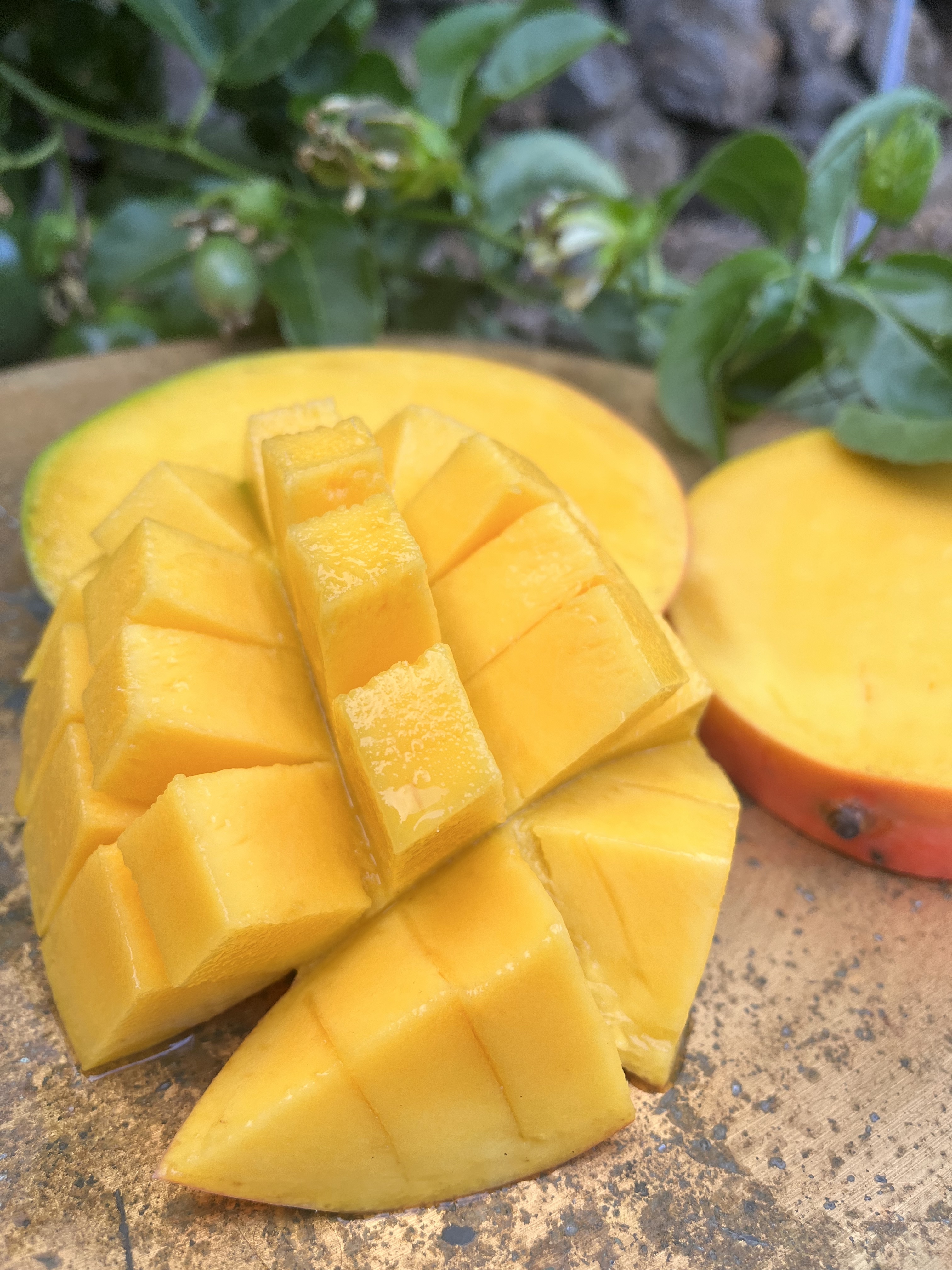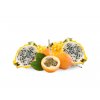How to Cut a Mango
Cutting a mango can be easy once you know the right technique. Start by standing the fruit upright and slicing off the two rounded cheeks along the flat seed. Take each cheek and score the flesh in a crisscross pattern without cutting through the skin. Then, flip the skin inside out so the cubes pop out like a hedgehog. Use a knife or spoon to remove the cubes. You can also trim the remaining flesh around the seed and enjoy every last bite.
Watch how to cut a mango easily:
What is a mango?
Mango is a tropical fruit that originates from South Asia, specifically India and Burma. It belongs to the Anacardiaceae family, and its Latin name is Mangifera indica. Mango fruits are known for their sweet taste, intense aroma, and juicy pulp, which can be yellow, orange, or red depending on the variety.
Mangoes are oval to round in shape and can vary in size from small fruits weighing about 150 grams to larger specimens weighing up to 2 kilograms. The skin is thin and comes in various colors—from green through yellow to red, often a combination of these shades. Inside the fruit is a large flat pit that is not edible.
Where does mango grow?
Today, mangoes are cultivated in tropical and subtropical regions around the world. The largest producers are India, China, Thailand, Mexico, and the Philippines. Mangoes are also grown in Africa, South America, and even some parts of southern Europe, such as Spain. Thanks to modern agricultural techniques, mangoes are available year-round in many parts of the world. However, it is one of the most challenging crops to transport, and in almost all cases, it is harvested too early, which affects the flavor. That’s why it’s important to support European producers who can deliver their fruit quickly and at a much higher quality and ripeness.
What does mango contain?
Mango is rich in vitamins, minerals, and antioxidants. It contains a high amount of vitamin C, which supports the immune system, and vitamin A, which is important for eye and skin health. It also contains B vitamins, such as B6 (pyridoxine), which supports the nervous system. Mango is also a good source of fiber, which aids digestion, and potassium, which is important for heart health.

What are the benefits of mango?
Mango is not only tasty but also very beneficial for health thanks to its rich nutrient content. Here are some of the main reasons why it’s good to include mango in your diet:
-
Boosts the immune system: Mango is rich in vitamin C, which is essential for strengthening the immune system. It helps the body fight infections and shortens the duration of colds.
-
Eye health: Mango contains vitamin A, which is important for eye health. It helps maintain good vision and may reduce the risk of eye diseases such as macular degeneration.
-
Digestion: Mango is a good source of fiber that supports healthy digestion and helps prevent constipation. It also contains enzymes that aid in protein digestion.
-
Healthy skin: Thanks to its high content of vitamins A and E, regular consumption of mango can contribute to healthier skin. These vitamins support cell regeneration and help keep the skin hydrated and youthful.
-
Blood sugar regulation: Some studies suggest that mango may help regulate blood sugar levels, which is important for preventing and managing diabetes.
-
Heart support: Mango contains potassium and antioxidants that contribute to heart health. Potassium helps maintain normal blood pressure, while antioxidants protect blood vessels from damage by free radicals.
-
Weight loss: Mango is a low-calorie fruit rich in fiber, which can help you feel full and reduce appetite—useful for weight management.
Overall, mango offers numerous health benefits, making it a great choice for a healthy and balanced diet.
How to tell if a mango is ripe?
You can tell a ripe mango by its aroma and texture. A ripe mango has a pleasant sweet scent that you can smell even through the skin. When you gently press it, it should be slightly soft but not mushy. The color of the skin can vary depending on the variety, so don’t rely on color alone. Avoid mangoes with dark spots or those that are too hard.
A ripe mango should feel slightly soft but not mushy. If it feels as hard as a rock, it still needs to ripen—leave it at room temperature for a few days. The ideal mango gives slightly when gently squeezed, similar to a ripe avocado.
The skin color can vary (yellow, red, green), so it's not a reliable indicator on its own. It's better to combine smell, touch, and the appearance of the skin—it shouldn’t be dull or wrinkled.
Mango is a climacteric fruit, which means it continues to ripen after being picked—just like bananas, avocados, or pears. So if you bring home a mango that is still hard to the touch, it’s perfectly fine. Just leave it at room temperature for a few days, and it will soften and ripen beautifully.
This is a natural property of mangoes—even on our farm, we harvest the fruit just before full softness, so that they ripen at the ideal moment during transport to the Czech Republic.
❗ However, it’s important that the mango is not picked too early. If the fruit is harvested unripe—before it has developed enough natural sugars—it will soften but taste bland, sour, or dull.
That’s why we always harvest our mangoes when they already have enough sweetness and aromatic compounds, but are still firm—so they maintain their quality during transport. This way, you can enjoy a truly ripe mango at home that smells wonderful, tastes amazing, and melts in your mouth.








